What should be paid attention to when driving on a one-way street? What are the regulations around one-way streets in Vietnam?
What is a one-way street in Vietnam?
According to the guidance in Clause 3.9, Article 3 of Regulation 41:2019/BGTVT, a one-way street is defined as a one-way street.
Accordingly, vehicles participating in traffic when traveling on this road are only allowed to go in a certain direction. This regulation applies to all vehicles participating in traffic, except priority vehicles on duty.
Because Clause 2, Article 22 of the Law on Road Traffic in 2008 stipulates that fire engines traveling on duty; military vehicles and police vehicles on urgent duty; motorcades led by police cars; ambulances on duty; dike-watch vehicles, vehicles employed in overcoming natural disasters or epidemics or in a state of emergency as prescribed by law, when traveling on duty, may enter one-way roads from the opposite direction and other roads open to traffic.
What is a one-way street sign in Vietnam? How many types of one-way street signs are there?
- One-way road signs are signs placed behind junctions and intersections, signposts indicating sections of one-way traffic, only allowing road vehicles to enter in the direction of arrows (go straight), reverse turns are prohibited (except for vehicles with the right of way under the Road Traffic Law 2008).
- One-way roads currently do not have fixed signs but are identified through traffic signs indicating one-way roads, including: Sign I.407a “One-way street”, sign I.407b “One-way street” ”, sign I.407c “One-way street” and sign P.102 “Prohibit going in the opposite direction”.
- Therefore, in order to identify a one-way street simply, road users should first look for traffic signs before the intersection.
*One-way road sign signpost R 407a
- One-way road signs only allow going straight in the direction of the arrow, symbol R 407a. The name of the sign is "One-way street sign".
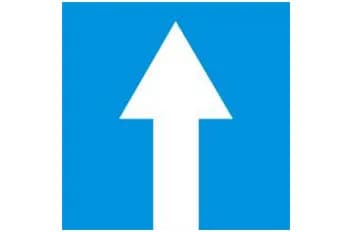
- One-way traffic signs R 407a will usually be placed after junctions and intersections. This type of sign indicates the sections of the road that will have to run in one direction, only allowing road vehicles to enter and follow the direction of the arrow guided (go straight).
- Note: one-way road sign R 407a prohibits vehicle drivers from participating in traffic to make a U-turn (except for vehicles prioritized under the Road Traffic Law).
- When the driver of the vehicle has gone through the end of the one-way road, the number plate 204 will be placed with the meaning "Two-way road" to signal that the one-way road ban sign has expired. allowing drivers of vehicles participating in traffic to start moving in two directions.
*One-way road sign signboard R 407b
- One-way road sign number: R.407b, name of one-way street sign.
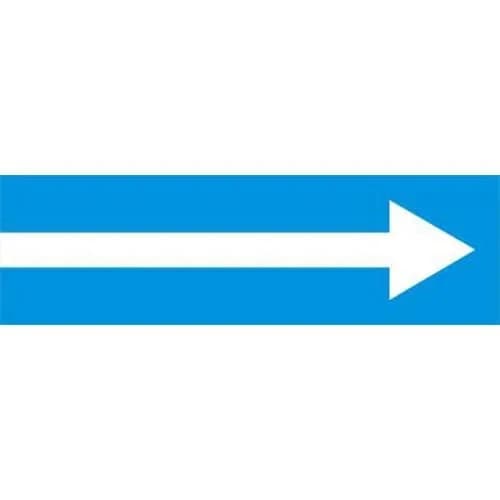
- The one-way road sign R 407b will usually be placed in front of junctions and intersections, signposts indicating sections of the road that are only allowed to run one way. Only road vehicles are allowed to enter the road in the direction indicated by the arrow (turn right).
- Note: a one-way traffic sign is a sign that prohibits drivers from participating in traffic to turn back (except for vehicles having the right of way based on the Road Traffic Law).
*R 407c . one-way street sign
- One-way street sign number: R 407c, the name of the sign "one-way street".
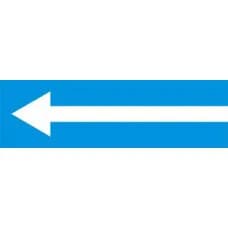
- One-way road sign R 407c is placed in front of junctions and intersections, signposts leading to roads that can only run one way. Only road vehicles are allowed to enter in the direction indicated by the arrow (turn left).
- One-way road sign number 407a will also prohibit the driver of vehicles participating in traffic from driving the vehicle to reverse (except for vehicles having the right of way based on road traffic laws).
*One-way road sign 102 prohibits going in the opposite direction
- A one-way road sign signifies a ban on going in the opposite direction to warn the road that all vehicles (motorized and rudimentary vehicles) are prohibited from going in the direction of the sign, except for vehicles that are allowed to give priority according to regulations.
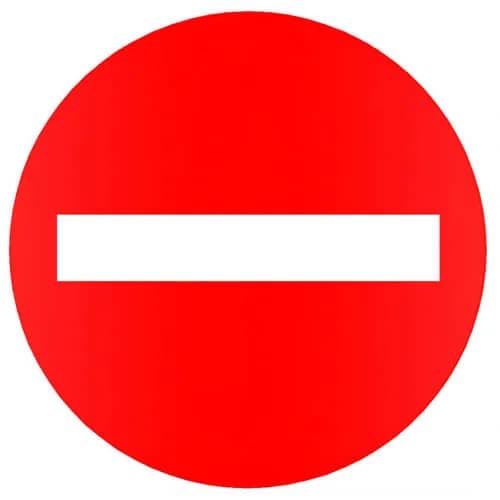
- With one-way street signs, pedestrians will still be allowed to walk on sidewalks or curbs.
- The direction of going in the opposite direction from the direction of placing the one-way street sign 102 is the right way. Therefore, vehicles are allowed to follow directions, so a 1-way directional sign with sign number 407a must be placed.
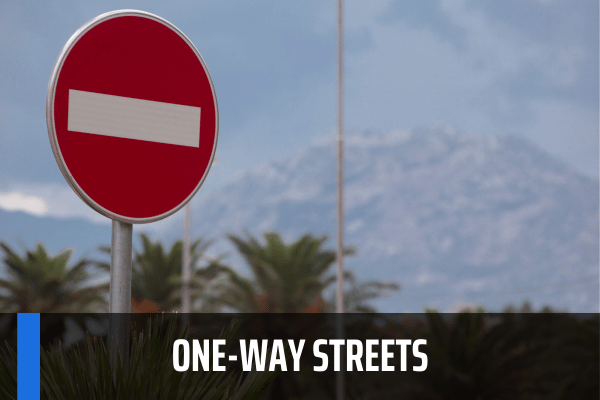
What should be paid attention to when driving on a one-way street? What are the regulations around one-way streets in Vietnam? (Image from internet)
What should be paid attention to when driving on a one-way street in Vietnam?
*Speed allowed on a one-way street
In Articles 6 and 7 of Circular 31/2019/TT-BGTVT, vehicles traveling on one-way roads need to adjust the speed allowed to move as follows:
- Maximum speed of cars in densely populated areas (except highways):
+ Double track; One-way roads with two or more motor vehicle lanes: 60 km/h.
+ Two-way roads; one-way roads with one lane for motor vehicles: 50 km/h.
- Maximum speed of cars outside densely populated areas (except highways):
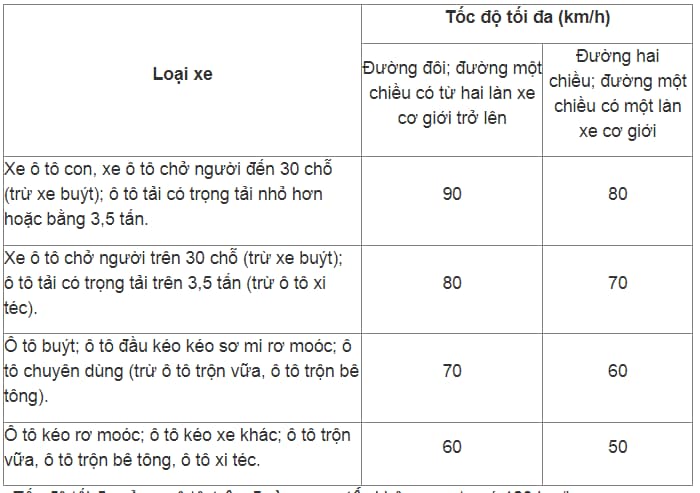
- The maximum speed of cars on highways does not exceed 120 km/h.
*About using lanes on one-way streets
- In Clause 2, Article 13 of the Law on Road Traffic in 2008, if on a one-way street there are many lanes separated by road markings, the vehicles must move as follows:
+ The rudimentary vehicle must run on the innermost right lane.
+ Motor vehicles and special-use motorcycles run on the left lane.
*Do not stop or park arbitrarily on a one-way street.
At Point a, Clause 4, Article 18 of the Law on Road Traffic in 2008, vehicle drivers are not allowed to stop or park at a position on the left side of a one-way street.
LawNet